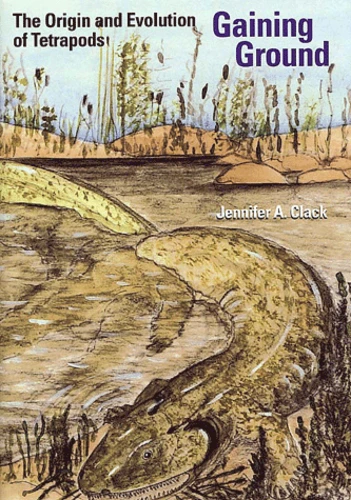Gaining Ground. The Origin And Evolution Of Tetrapods
Par :Formats :
- Paiement en ligne :
- Livraison à domicile ou en point Mondial Relay indisponible
- Retrait Click and Collect en magasin gratuit
- Nombre de pages369
- PrésentationRelié
- Poids0.945 kg
- Dimensions18,7 cm × 26,3 cm × 2,8 cm
- ISBN0-253-34054-3
- EAN9780253340542
- Date de parution01/01/2002
- ÉditeurIndiana University Press
Résumé
Around 370 million years ago, a distant relative of a modern lungfish began a most extraordinary adventure: It emerged from the sea and laid claim to the land. Over the next 70 million years, this tentative beachhead became a worldwide colonization by an ever-increasing variety of four-limbed life. These first "tetrapods" are the ancestors of ail vertebrate life on land. This book tells the rich and complex story of their emergence and evolution. Beginning with their closest relatives, the lobe-fin fishes such as lungfishes and coelacanths, Jennifer A. Clack defines what a tetrapod is, describes their anatomy, and explains how they are related to other vertebrates.
She looks at the Devonian environment in which they evolved, describes the known species, and explores the order and timing of anatomical changes that occurred during the fish-to-tetrapod transition. Clack explains how older ideas about the transition are being overturned by recent discoveries and new ideas about evolutionary change. Following the story through the Carboniferous period, she shows how the evolution of terrestrial characters occurred several times, convergently, among different groups.
Around 370 million years ago, a distant relative of a modern lungfish began a most extraordinary adventure: It emerged from the sea and laid claim to the land. Over the next 70 million years, this tentative beachhead became a worldwide colonization by an ever-increasing variety of four-limbed life. These first "tetrapods" are the ancestors of ail vertebrate life on land. This book tells the rich and complex story of their emergence and evolution. Beginning with their closest relatives, the lobe-fin fishes such as lungfishes and coelacanths, Jennifer A. Clack defines what a tetrapod is, describes their anatomy, and explains how they are related to other vertebrates.
She looks at the Devonian environment in which they evolved, describes the known species, and explores the order and timing of anatomical changes that occurred during the fish-to-tetrapod transition. Clack explains how older ideas about the transition are being overturned by recent discoveries and new ideas about evolutionary change. Following the story through the Carboniferous period, she shows how the evolution of terrestrial characters occurred several times, convergently, among different groups.

